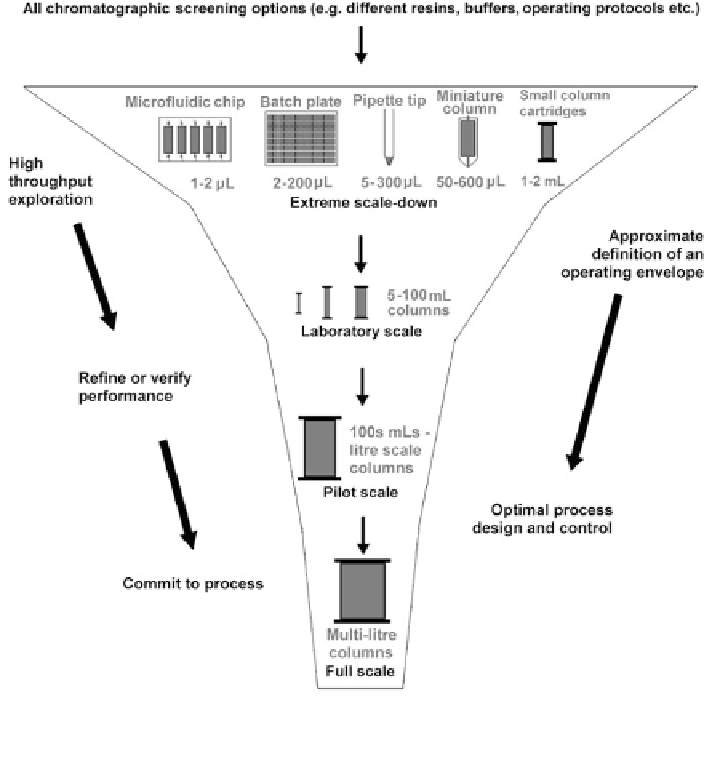Biomedical Engineering Reference
In-Depth Information
Fig. 1 Data derived from extreme scale-down operation focusses subsequent experimentation
upon key manufacturing choices and ultimately enables the development of an optimal column
design
thus act as a precursor to more detailed operating space characterisation by con-
ventional column runs. Alternatively, it may be possible to use engineering
understanding, empirical equations or mathematical models to adjust the scale-
down outputs and thereby create quantitative column predictions. On this basis, the
necessary transient and equilibrium properties may need to be measured at scale-
down and then used in conjunction with appropriate correlations to predict the rate
and extent of adsorption or desorption at scale-up. In either case, there are four
principles that govern extreme scale-down chromatography, which are applicable
to varying degrees depending upon exactly which type of device is used and its
mode of operation [
3
]:
• Miniaturisation: This can lower the volume of reagents required and results in
faster experimental processing, which reduces costs and times. Miniaturisation

Search WWH ::

Custom Search